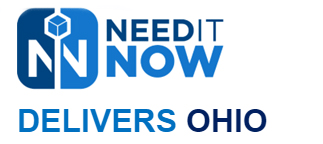Retail therapy has taken over the internet. This trend is great for sales but tough on order fulfillment.
The issue isn’t with products flying off the shelves of your warehouse but in customer expectations of shipping times. Fast delivery isn’t up for negotiation.
More than 60% of customers want products delivered in less than three days.
The changing delivery landscape will have major effects on e-commerce retailers across all industries. Check out this overview of the future of last-mile logistics.
Customers Over Everything
Same-day and one-day delivery services led by Amazon leave small shops scrambling to keep customers happy. The trouble in competing with large retailers like Target and Amazon in same-day shipping is that their focus is on delivery and not product development.
For many small businesses, the development of an actual product or service is the priority. There is no universe in which small mom-and-pop shops can both master their craft and have a flawless supply chain strategy.
The need to please customers will bring challenges that affect how your brand is perceived online. Getting ahead of the curve by controlling the story around your limitations can save you from bad reviews.
For example, it’s better to show a product as sold out than to fumble on the shipping. A sold-out product can mean your item is exclusive and in high demand. An item arriving late can mark your company as unprofessional with poor customer service. Customers won’t ask what happened behind the scenes.
It’s important you decide how to steer the conversation to ensure increased sales don’t lead to fulfillment problems. Big brands will continue trying to cater to every customer demand.
Find other ways to compete to keep your business afloat.
The Need for Visibility
Customers not only need fast delivery but they expect to see where the package is at all times. This expectation is nothing as tracking numbers have been used for decades.
What’s new about delivery visibility is that services like Uber have shown customers that it’s important to know where the driver is at all times. E-commerce retailers will need partners who can offer customers this option.
A study by Digital Commerce 360 reveals that 93% of customers want to stay informed throughout the delivery process. Almost half won’t order from a brand with bad delivery visibility.
Delivery visibility often comes with communication updates. For example, a text alert might tell the customer that the driver is five stops away to offer the assurance that the package will arrive on time.
Sharing information on the driver is also helpful in building trust. With Uber, the driver’s name and vehicle model is shared to help customers navigate safely.
Including similar tracking features with last-mile delivery increases transparency in the shipping process.
Brands will also need delivery visibility to deal with customer service issues. Shipment mixups do happen. The way you resolve it will depend on your access to detailed delivery data. A customer who receives the wrong item trusts you to know exactly where their item is and get it to them right away.
Offer anything less and you could lose a customer and possibly receive a bad review online. Customers frequently review both the shipping process along with the product quality.
The Case for Higher Costs
Supply chain costs are high. But last-mile delivery services get a bad rap for being almost a third of overall supply chain costs.
As the customer-facing leg of the race, it’s a necessary investment. Arm your business with the operations budget to take on this supply chain cost.
It makes all the difference in how you drive revenue long term. Unless customer expectations back down, last-mile logistics are the saving grace for fast delivery.
A customer’s experience with the delivery driver sets the tone for how you do business. Any unprofessional or reckless behavior on the part of the drivers reflects on your brand.
Investing a healthy sum into your last-mile delivery services can improve the quality of your driving team allowing you to present your product with poise and confidence.
Devices Will Drive Demand
The future of e-commerce will be heavily influenced by consumer tech. Devices like Alexa, wearables and other gadgets will get more involved in the ordering process.
Virtual reality (VR) and augmented reality allow e-commerce to compete with retailers in ways it never could before. VR experiences help customers ‘try on’ clothes before making a purchase or visualize themselves using a product.
This is a major step in product marketing that will no doubt drive sales on items that usually required a trip to the mall. Shipping furniture and more specialized items will become more of a trend thanks to advanced tech.
Brick and mortar retailers will blend in-person and online shopping experiences for customers. This means that e-commerce will soon be at the center of everyday life.
Fulfillment services can also expect to be transformed. The popularity of lockers to pick up packages simplifies the delivery process by allowing customers to meet the brand halfway.
Quality Fast Delivery
The future of e-commerce is about quality customer relationships more than it is about fast delivery. Customers want quick turnarounds on shipping but not at the expense of a good experience.
Supply chain managers will need to find solutions for being able to instantly address delivery problems. Unanswered questions can permanently sever ties with customers.
These growing pains will challenge the last mile delivery industry to be more innovative in its approach to doing business. This will inevitably lead to prosperity for both retailers and customers.
For more information on last-mile logistics services, please check out our website.
